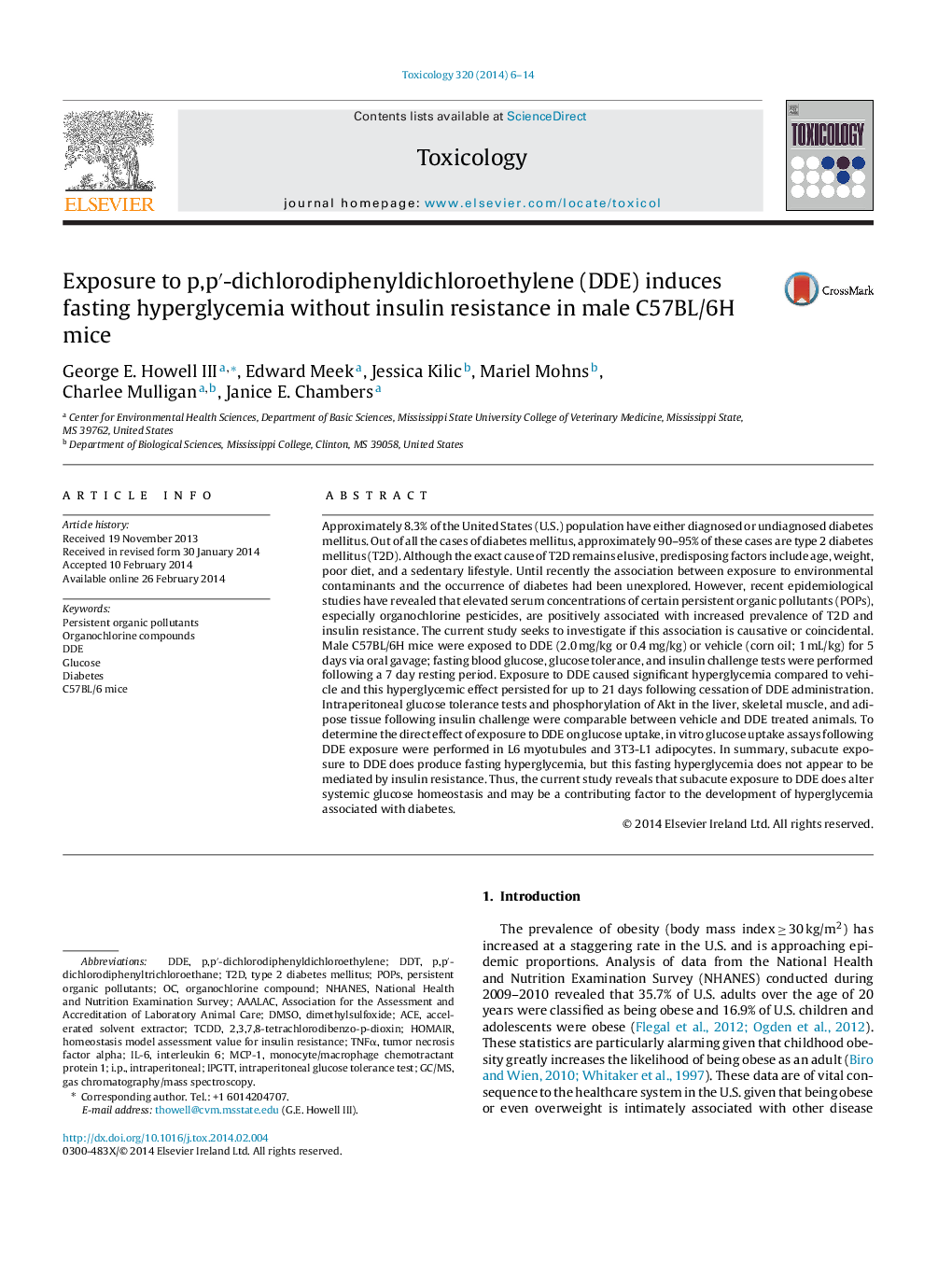| کد مقاله | کد نشریه | سال انتشار | مقاله انگلیسی | نسخه تمام متن |
|---|---|---|---|---|
| 5859214 | 1562336 | 2014 | 9 صفحه PDF | دانلود رایگان |

- DDE exposure produced hyperglycemia for up to 21 days in C57BL/6H mice.
- DDE did not alter IPGTT or insulin signaling in liver, keletal muscle, and adipose.
- Serum levels of insulin, glucagon, and adipokines were unaltered following exposure.
- Insulin stimulated glucose uptake was not altered by DDE in vitro.
- Hepatic and serum DDE levels dropped significantly following exposure.
Approximately 8.3% of the United States (U.S.) population have either diagnosed or undiagnosed diabetes mellitus. Out of all the cases of diabetes mellitus, approximately 90-95% of these cases are type 2 diabetes mellitus (T2D). Although the exact cause of T2D remains elusive, predisposing factors include age, weight, poor diet, and a sedentary lifestyle. Until recently the association between exposure to environmental contaminants and the occurrence of diabetes had been unexplored. However, recent epidemiological studies have revealed that elevated serum concentrations of certain persistent organic pollutants (POPs), especially organochlorine pesticides, are positively associated with increased prevalence of T2D and insulin resistance. The current study seeks to investigate if this association is causative or coincidental. Male C57BL/6H mice were exposed to DDE (2.0Â mg/kg or 0.4Â mg/kg) or vehicle (corn oil; 1Â mL/kg) for 5 days via oral gavage; fasting blood glucose, glucose tolerance, and insulin challenge tests were performed following a 7 day resting period. Exposure to DDE caused significant hyperglycemia compared to vehicle and this hyperglycemic effect persisted for up to 21 days following cessation of DDE administration. Intraperitoneal glucose tolerance tests and phosphorylation of Akt in the liver, skeletal muscle, and adipose tissue following insulin challenge were comparable between vehicle and DDE treated animals. To determine the direct effect of exposure to DDE on glucose uptake, in vitro glucose uptake assays following DDE exposure were performed in L6 myotubules and 3T3-L1 adipocytes. In summary, subacute exposure to DDE does produce fasting hyperglycemia, but this fasting hyperglycemia does not appear to be mediated by insulin resistance. Thus, the current study reveals that subacute exposure to DDE does alter systemic glucose homeostasis and may be a contributing factor to the development of hyperglycemia associated with diabetes.
Journal: Toxicology - Volume 320, 5 June 2014, Pages 6-14